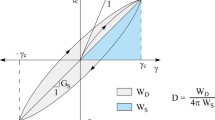Abstract
The seasonally frozen ground has been focused on as research topics such as the frost heaving under the asphalt road rather than the permafrost ground due to the latitudinal location of Korea. However, the recent construction of the second Korean Antarctic research station, the Jangbogo station and the participation on the development of the natural gas pipeline in Russia arouse the research interests on the behavior of the permafrost ground. At the design process of the geotechnical structures on the permafrost ground, the evaluation of the mechanical characteristics of frozen soil is very important. In the laboratory tests, it is crucial to understand the effects of testing conditions such as loading rate and temperature on the mechanical behavior of frozen soils. Therefore, unconfined compression tests are performed to evaluate the loading rate effects on the mechanical characteristics of frozen granular soils. Based on the experimental results, the loading rate affects both the strength and deformation characteristics of the frozen soils. The ASTM standards on the loading rate of the frozen sands are fast enough for the strength evaluations but not for the stiffness evaluations. Furthermore, the loading rate effects are evaluated on the bearing capacity and deformation of pile installed on the permafrost via numerical analyses with experimental results.
Similar content being viewed by others
References
Anderson, D. M. and Morgenstern, N. R. (1973). “Permafrost.” National Academy of Sciences, 2nd International Conference, pp. 257–288.
ASTM (1995). “Laboratory determination of creep properties of frozen soil samples by uniaxial compression (D 5520).” 1995 Annual Book of ASTM Standards, 04.08.ASTM(4), Philadelphia: ASTM, DOI: 10.1520/D5520-11.
Bragg, R. A. and Andersland, O. B. (1982). “Strain rate, temperature and sample size effects on compression and tensile properties of frozen sand.” Ground Freezing 1980: Developments in Geotechnical Engineering, Vol. 28, pp. 35–46, DOI: 10.1016/B978-0-444-42010-7.50008-6.
Choi, H. W. (2011). An experimental study on the unconfined compression strength and split tensile strength properties to freezing temperature and loading rate of frozen soil, MSc Thesis.
Hawkes, I. and Mellor, M. (1972). “Deformation and fracture of ice under uniaxial stress.” J. Glaciol., Vol. 11, No. 61, pp. 103–131.
Haynes, F. D., Karalius, J. A., and Kalafut, J. (1975). Strain rate effect on the strength of frozen silt, U. S. Army Cold Regions Research and Engineering Laboratory Research Report 350, DOI: 10.1016/0148-9062(78)91255-X.
Hoekstra, P. (1969). The physics and chemistry of frozen soils, Effects of Temperature and Heat on Engineering Behavior of Soils, Washington, D.C.: Highway Research Board, Spec. Rep. 103, pp. 78–90.
Kim, Y. C. (2003). “Experimental studies on the uniaxial compression strength, unfrozen water content and ultrasonic wave velocity of frozen soils.” Journal of Korean Society of Civil Engineers, Vol. 23, No. 5, pp. 309–317.
Ladanyi, B. (1981). “Mechnical behaviour of frozen soils.” In Proc. Int. Symp. on Mechanical Behavior of Structured Media, Calreton Univ., Ottawa, New York, B, pp. 205–245.
Parameswaran, V. R. (1978). “Adfreeze strength of frozen sand to model piles.” Canadian Geotechnical Journal, Vol. 15, No. 4, pp. 494–500.
Patterson, D. E. and Smith, M. W. (1980). “The measurement of unfrozen content by time domain reflectometry.” Canadian Geotechnical Journal, Vol. 18, No. 1, pp. 131–144, DOI: 10.1139/t81-012.
Ryu, N. H. (1995). “Experimental studies on the compressive strength of the frozen soil(II).” 1995 Journal of Department of Agricultural Engineering, Vol. 37, No. 6, pp. 87–99.
Sanger, F. J. and Kaplar, C. W. (1963). “Permafrost.” National Academy of Sciences, 1st International Conference, pp. 305–315.
Sego, D. C. and Chernenko, D. (1984). “Confining pressure influence on the strength of frozen saline sand.” Proc., Cold Regions Engineering Specialty Conference, Edmonton, Alta., pp. 565–578.
Author information
Authors and Affiliations
Corresponding author
Rights and permissions
About this article
Cite this article
Lee, J., Kim, Y.S., Chae, D. et al. Loading rate effects on strength and stiffness of frozen sands. KSCE J Civ Eng 20, 208–215 (2016). https://doi.org/10.1007/s12205-015-1417-6
Received:
Revised:
Accepted:
Published:
Issue Date:
DOI: https://doi.org/10.1007/s12205-015-1417-6




